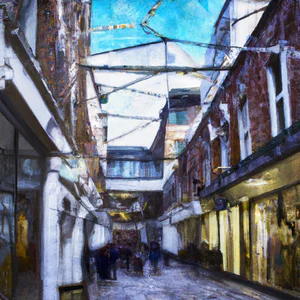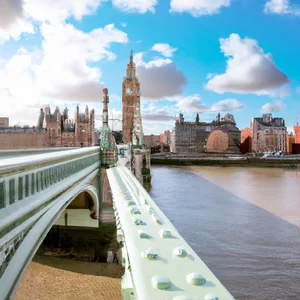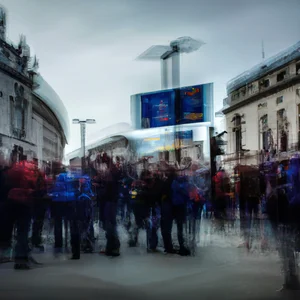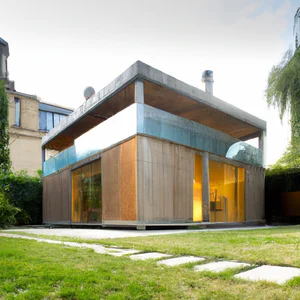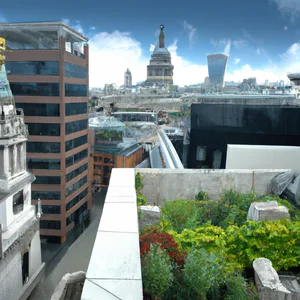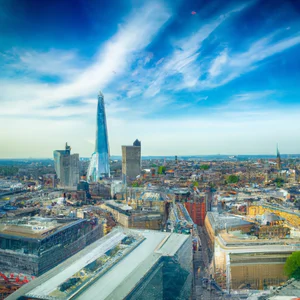Book your experience
Dennis Severs' House: Immersive Journey into 18th Century London
Dennis Severs’ House: a journey into eighteenth-century London
So, if you’ve ever been to London, you know that there’s always something new to discover. But let me tell you about a very special place, which in my opinion is a bit like time travel. It’s Dennis Severs’ house, and it’s like you’ve stepped into a historical novel, you know?
Imagine crossing the threshold and finding yourself catapulted into the 1700s. Each room is like a scene from a movie, with candles glowing and the smells of food enveloping you. You can almost hear the voices of the residents, as if they were chatting to each other while you stroll among the period furniture. It’s crazy!
Well, I remember when I went there for the first time. I was a little skeptical, thinking it was just another tourist attraction. But, oh boy, did I have to change my mind! The thing that impressed me most was the attention to detail. Every object, from porcelain to paintings, tells a story. But don’t expect a boring guided tour: here everything is done differently. You have to move slowly, savor every corner, as if you were a detective looking for clues.
Of course, I don’t know for sure if everyone thinks this way, but to me it gave the impression of being a place where the past and the present mix. I’m sure I saw a couple of tourists looking around with wide eyes, as if they had just discovered a hidden treasure. And, to be honest, it seemed like a sort of almost meditative experience to me.
Ultimately, I think Dennis Severs’ house is a place truly worth visiting, at least once in your life. If you are looking for something unique, a little outside the box, this is the right place for you. Without a doubt, it’s a fascinating way to get a glimpse into how people lived at the time. It may not be for everyone, but if you are curious and love stories, well, this house is a real gem.
Dennis Severs’ House: immersive journey into 18th century London
Discover the enchantment of 18th century London
Walking along the cobbled streets of Spitalfields one cool April morning, I found myself in front of a building that seemed out of time: Dennis Severs’ House. The facade, with its faded red bricks and windows framed in dark wood, exuded a mysterious charm. Upon entering, I was greeted by an enveloping scent of wood and beeswax, as if a distant time had burst into the present. Every corner of the house told a story, yet there was something more: a palpable sensation of life, of untold stories, of whispers of a London that once was.
Dennis Severs, the creator of this unique experience, has transformed his home into a living work of art, where each room represents a different era and atmosphere. The house was conceived as a multisensory journey, an invitation to explore not only through sight, but also through hearing, smell and touch. According to the official Dennis Severs’ House website, each visit is an opportunity to immerse yourself in 18th-century London, where you can almost hear the crackle of the fire and the rustle of period clothing.
Unconventional Tip: For a truly magical experience, consider visiting during the week, preferably early in the morning. This way, you can enjoy the house in relative tranquility, without the crowds of tourists. It is during these times that the house reveals its most intimate secrets.
The cultural impact of Dennis Severs’ House
The Dennis Severs’ House is not just a museum, but a true piece of living history. Every detail, from the tableware to the blankets, has been carefully chosen to reflect the daily life of the Huguenots, a community of French refugees who found a home in London in the 18th century. The house represents a bridge between the past and the present, an invitation to reflect on the experiences of those who have lived in these spaces.
In an age where tourism is becoming increasingly oriented towards consumption and superficiality, Dennis Severs’ House stands out as an example of responsible tourism. Not only does it offer an authentic and educational experience, it also promotes the preservation of local culture and history.
An activity worth trying
During your visit, don’t forget to take a moment to sit in the dining room, where you can admire the table set as if the hosts were about to return at any moment. This is the ideal place to reflect on the atmosphere that surrounds you and to take some photos, always respecting the environment and the objects on display.
Final reflection
Many might think that a museum like this is only for history buffs, but the truth is that the enchantment of the Dennis Severs’ House transcends labels. I invite readers to consider: what stories can a place tell, and how can we hear them? Every visit is an opportunity to rediscover not only London’s history, but also our connection to the past.
A multisensory tour through time and space
An experience that awakens the senses
I still remember the first time I set foot in one of the historic houses in Spitalfields. It was a spring morning and the air was permeated by a mix of smells of fresh bread and exotic spices. As I walked through the lovingly furnished rooms, I felt like I had been transported back to the 18th century. A young guide, dressed in period clothing, told me stories of daily life, of traders and artisans who had made this area a crossroads of cultures and traditions. Every object, from the hardwood table to the hanging fabrics, seemed to whisper forgotten stories.
Practical information
A multi-sensory tour of 18th-century London can easily be arranged at Dennis Severs’ House, a unique attraction that invites visitors to explore ten rooms, each representing a different period of life in this historic home. It is advisable to book in advance, especially on weekends, when the crowds are higher. Tours run at specific times, and the official Dennis Severs website offers up-to-date information on availability and costs.
An insider tip
If you want a truly authentic experience, I recommend visiting during one of the themed evenings, where actors in costume recreate scenes of everyday life, making the atmosphere even more vivid. These events are less crowded and allow you to interact more with historical figures.
A cultural heritage to discover
This experience is not just time travel, but an immersion in London’s cultural heritage. The Dennis Severs house is an example of how the stories and lives of those who came before us can still influence our perception of the present. The care taken in the recreation of environments and objects ensures that each visitor can reconnect with a broader history, uniting past and present in a nostalgic embrace.
Sustainability and responsible tourism
In an age where sustainability is key, managing historic spaces like this promotes responsible practices, preserving cultural heritage and reducing environmental impact. Most of the objects on display are original or restored, thus reducing the need for new production and contributing to a vision of sustainable tourism.
Soak up the atmosphere
Imagine walking into a room where the smoke from a lit fireplace mixes with the aroma of freshly brewed tea. The walls are decorated with tapestries that tell stories of distant journeys, while the sound of the footsteps of a child playing in the next room envelops you in an embrace of nostalgia. This is the power of a multi-sensory tour.
An activity from don’t miss it
After visiting the house, I recommend you explore Spitalfields Market, located within walking distance. Here you can taste typical dishes, buy local crafts and immerse yourself in the lively contemporary culture that mixes with history.
Myths and misconceptions
It is common to think that life in the 18th century was monotonous and lacking in stimulation. In reality, London was a crossroads of cultures and ideas, a living and vibrant place, where commerce and creativity intertwined. By visiting Spitalfields, you can experience first-hand this wealth of experiences and discover how dynamic life was back then.
A final reflection
After this immersion in the past, I invite you to reflect: what stories from your daily life would you like to be told for posterity? 18th century London is not just a memory; it is an invitation to discover and enhance the stories that surround us every day.
History and mystery: the legacy of Dennis Severs
A journey through time
I still remember the first time I crossed the threshold of Dennis Severs’ house in Spitalfields. Dim candlelight danced on the walls, revealing details of a bygone era that seemed to whisper forgotten stories. Each room, a work of art, was an invitation to explore 18th century London, steeped in mystery and charm. The air was pervaded by the scent of tea and spices, while the crackling of the fireplace seemed to accompany the distant voices of those who once inhabited that place.
A unique experience
The house, now a museum, was conceived by Dennis Severs as an immersive installation, where visitors can experience history rather than simply observe it. Each floor tells a part of the daily life of the Huguenots, a community of French refugees who settled in London. At the time of my visit, I discovered that the house is open by reservation only and places are limited, making the experience even more exclusive. I recommend checking the official website Dennis Severs’ House for the latest information and to book in advance.
An insider tip
A little-known secret involves night visits, which offer a unique perspective on the atmosphere of the house. On these evenings, the dimmed lights and sounds of modern London fade, allowing visitors to fully immerse themselves in the historic era. This sensory experience, with its mix of history and mystery, is an unmissable way to understand the cultural legacy of this fascinating neighborhood.
A lasting cultural impact
Dennis Severs’ legacy goes beyond simply displaying historical objects; it’s a way to reflect on the daily life of a time when modern London was taking shape. His vision has inspired a new generation of museums and exhibition spaces to think about interaction and immersion as tools for telling stories.
Sustainability and responsibility
Interestingly, this approach to tourism not only celebrates history but also promotes sustainable practices. The house is committed to preserving original materials and using ecological resources, contributing to responsible tourism that respects cultural heritage.
Soak up the atmosphere
The visit to Dennis Severs’ house is much more than a simple tourist stop; it is an experience that involves all the senses. We invite you to let yourself be transported by the sounds, scents and sights that surround you, as if you were an inhabitant of Spitalfields in the 18th century.
An activity worth trying
After your visit, I recommend walking around the Spitalfields neighborhood and visiting the local market. Here you can taste typical dishes and discover artisans and independent shops, which preserve the authenticity of the place.
Dispelling the myths
A common misconception is that historical experiences are boring or reserved only for experts. In fact, Dennis Severs’ house is designed for everyone, from the curious to the true history buff, offering an engaging and fascinating experience.
A personal reflection
Next time you are in London, consider visiting this amazing place. I invite you to reflect on how history can be not just a story of the past, but a way to better understand ourselves in the present. What stories would the walls of a place you visit tell you?
Closed doors: the charm of the unknown
A personal experience that opens the doors of the imagination
I vividly remember the moment I crossed the threshold of an ancient mansion in Spitalfields, a place that seemed to tell forgotten stories. The atmosphere was full of mystery and nostalgia, while the scent of aged wood and beeswax enveloped the senses. Every corner seemed to hold a secret, every closed door a world to discover. This experience made me understand how the charm of the unknown can enrich a visit to London, transporting the traveler to an era in which time stood still.
Practical information and local resources
If you want to immerse yourself in this fascinating world, I recommend you visit Dennis Severs’ House, a museum that offers a journey through time through 18th century architecture and furnishings. It is located on Folgate Street and its guided tours take place at specific times, so it is best to book in advance. For further details, you can consult the official website Dennis Severs’ House.
An insider tip
Here’s a little-known tip: Try visiting the house during special opening nights, when the rooms are lit only by candles. This unique experience offers a new dimension and atmosphere that conveys a rare authenticity, allowing you to perceive the past more vividly.
The cultural impact on the area
The closed doors of these historic buildings are not only physical barriers, but also represent the stories of lives lived, the aspirations and challenges of those who have inhabited these spaces. The legacy of Dennis Severs, in particular, has helped bring attention back to Spitalfields and stimulated renewed interest in London’s social history, making visible the link between past and present.
Sustainable tourism practices
Visiting places like Dennis Severs’ House is also a way to support responsible tourism practices. The house is an example of how the preservation of local culture and history can coexist with respectful tourism, contributing to the maintenance of the city’s historical and artistic heritage.
An immersion in the details
Imagine walking in a room where time seems to have stopped: the touch of fine fabrics, the sight of period paintings, the sound of the crackling of the fire in the fireplace. Each element is a window onto another era, an opportunity to reflect on the daily life of those who lived in these rooms.
Activities to try
In addition to visiting the house, I recommend exploring the Spitalfields market, where you can discover local crafts and typical food products. This will not only enrich your experience, but also give you the opportunity to interact with local artists and producers.
Myths to dispel
A common misconception is that historic homes are only for history buffs. In reality, the experience is accessible and fascinating for all, offering a unique perspective on life in bygone eras, capable of fascinating even the most sceptical.
A final reflection
As you walk away from these closed doors, ask yourself: What stories remain untold behind London’s walls? The unknown is not only a mystery to be solved, but also an invitation to explore, to snoop and to discover a world that, although being far away, it continues to influence the present.
Unique tip: visit at unusual times
A personal experience
Imagine walking through the streets of London as dusk begins to envelop the city in a warm golden light. It is at this moment that I decided to visit Dennis Severs’ house, a place that seems suspended in time, where the 18th century comes to life in an astonishing way. The choice to visit at an unusual time, just before closing, made the experience even more magical: the silence was interrupted only by the crackling of the fire and the distant sounds of everyday life.
Practical information
If you would like a similar experience, consider planning your visit to Dennis Severs’ House on a weekday, preferably late afternoon. Quieter times, such as between 5pm and 6pm, will allow you to explore this treasure without the crowds. Tickets are available on the official [Dennis Severs’ House] website (http://www.dennissevershouse.co.uk), where you can also find details on special events and special openings.
An insider tip
A secret that few know is that visitors in the first hours of opening can also enjoy a more intimate experience, with the opportunity to interact more with the curators. Don’t be afraid to ask questions or express curiosity: the atmosphere is welcoming and the curators are passionate and eager to share stories and anecdotes.
Cultural and historical impact
Choosing to visit at unusual times is not just a matter of peace of mind; it also offers a unique opportunity for reflection on London’s cultural heritage. Dennis Severs’ house is an emblematic example of how the past can influence the present, inviting visitors to connect with the daily life of an era that, despite being distant, continues to tell stories through objects and environments.
Responsible tourism
Opting for visits at less crowded times contributes to more sustainable tourism. Fewer visitors means less stress for staff and a more authentic experience for everyone. Also, if you feel inspired, consider bringing a reusable bottle with you to reduce waste and respect the environment.
Atmosphere and description
As you wander through the rooms, the scent of spices and the sound of the crackling fire envelop you, transporting you back in time. The walls, adorned with works of art and craft objects, tell stories of everyday life and forgotten secrets, creating an atmosphere that is both intimate and fascinating.
Recommended activity
After your visit, take time to explore Spitalfields Market, located a short walk from the house. Here, you can enjoy typical London dishes and discover local crafts, all immersed in the vibrant atmosphere of the neighborhood.
Myths and misconceptions
A common misconception is that the Dennis Severs House is just a museum: in reality, it is an immersive experience that challenges traditional museum conventions. Don’t expect a simple exposition; Get ready to be part of a living narrative.
Final reflection
After exploring the house at an unusual time, I asked myself: How can we, in our daily lives, find time to connect with the past in ways that inspire us? Next time you are in London, we invite you to reflect on how a simple change in weather can transform your travel experience.
A taste of culture: the daily life of the time
A close encounter with the past
I still remember the moment I crossed the threshold of one of the historic houses in Spitalfields, an ancient building that seemed to guard time itself. The air was thick with the scents of spices and freshly baked bread, and I found myself immersed in a scene that seemed straight out of a William Hogarth painting. Visitors, dressed in 18th-century clothing, moved through the rooms, while a narrator recounted the daily lives of Londoners of that period. This multi-sensory tour not only introduced me to history, but also allowed me to have an authentic and immersive experience.
A dive into everyday life
Daily life in London in the 18th century was complex and fascinating. The streets were alive with merchants, artisans and nobles, and every corner told stories of work and leisure. The men wore elaborate jackets and wigs, while the women sported sumptuous clothing, all in a fascinating contrast to the harsh realities of urban life. Families gathered around laid tables, where food was a sign of social status. Knowing that tea, then a novelty, was becoming a symbol of elegance made the atmosphere even more intriguing.
Insider tips
A little-known tip concerns visiting historic markets such as Old Spitalfields Market. Here, in addition to finding antiques and local crafts, you can participate in events and workshops that recreate the culinary traditions of the 18th century. Don’t miss the opportunity to savor an authentic plate of “pie and mash” in one of the historic takeaways, a true taste of the gastronomic culture of the time.
Cultural heritage
The importance of the daily life of that era lies not only in its aesthetic beauty, but also in the way it shaped modern society. The dining habits, fashions and social interactions of that time continue to influence London culture today. Awareness of these historical roots enriches our appreciation for the city.
Sustainability and responsible tourism
In an age where sustainability is key, many Spitalfields museums and tours promote responsible practices. Opting for experiences that showcase local craftsmanship and the use of sustainable materials not only supports the local economy but also helps preserve cultural heritage.
An unforgettable experience
If you want to further immerse yourself in the daily life of the 18th century, join a historical cooking workshop. Here you can learn how to prepare traditional dishes, using ingredients and techniques of the time. There is no better way to understand the culture of a place than through food.
Myths to dispel
A common misconception is that life in the 18th century was all about luxury and pageantry. In reality, even the more affluent classes faced significant challenges, such as disease and poverty. Understanding this duality helps paint a fuller and more realistic picture of London in that period.
Final reflection
As I left the market, I asked myself: how does the daily life of 18th-century Londoners continue to influence our contemporary choices and habits? Perhaps, traveling back in time is not only a way to discover the past, but also to reflect on how we live today.
Sustainability at the museum: an example of responsible tourism
A personal experience
I still remember my visit to a museum in London, where, while exploring the elegantly decorated 18th-century rooms, I was struck by a chance conversation with a curator. He told me how the museum was implementing sustainability practices to reduce its environmental impact. That conversation transformed the way I see tourism: it’s not just a way to explore the past, but also an opportunity to contribute to a better future.
Practical information
Today, many London museums, including those exploring 18th-century life, are embracing sustainable practices. For example, Spitalfields Museum recently started a recycling and composting programme, significantly reducing waste. According to data provided by the London Museum of Transport, 85% of their exhibits are now made with recycled materials. It is an important step towards responsible tourism that not only educates, but actively engages in the conservation of our planet.
Unconventional advice
If you want an authentic experience, I recommend booking a guided tour during less crowded hours. Not only will you have the opportunity to interact longer with the curators, but you will also be able to participate in sustainable craft workshops. These often little-publicised events will allow you to discover historic techniques and eco-friendly materials, adding a personal touch to your museum experience.
Cultural and historical impact
Sustainability in tourism is not just a modern trend; it is a historical necessity. During the 18th century, London was a crossroads of cultures and resources, and the economic and environmental choices of that time have shaped the world we live in today. Rediscovering these sustainable practices can teach us a lot about how we can live in harmony with our cultural and natural heritage.
Responsible tourism practices
Many museums now offer walking tours that avoid the use of polluting transportation, promoting a more immersive and sustainable experience. For example, the Museum of London has introduced routes that meander through historic areas, encouraging visitors to explore London’s heritage on foot. This not only reduces the environmental impact, but also enriches the tourist experience.
Immersion in the atmosphere
Imagine walking through rooms furnished with period furniture, smelling the scent of beeswax candles and listening to the crackle of a lit fireplace. This is the charm of a museum that not only celebrates the past, but also strives for a sustainable future. The warm light that filters through the windows, combined with the whisper of the stories that the walls have to tell, creates an atmosphere that is, at the same time, magical and responsible.
An activity worth trying
We invite you to join a guided tour that focuses on sustainability in tourism. Many museums offer special events that explore how sustainable practices can be integrated into the telling of history. Don’t miss the opportunity to discover how art and culture can go hand in hand with respect for the environment.
Myths to dispel
A common misconception is that sustainable tourism requires sacrifices in terms of the quality of the experience. In fact, it’s exactly the opposite: it contributes to a richer and more meaningful experience. Supporting museums that adopt responsible practices not only enriches your experience, but also helps preserve cultural heritage.
Final reflection
In light of these considerations, I invite you to reflect: how can we transform our travel choices into opportunities to contribute to a more sustainable future? Every visit to a museum is a chance to learn, explore and, above all, act. How about starting your adventure in 18th century London with a keen eye on sustainability?
Authentic experiences: interact with curators
Imagine finding yourself in a room with ancient charm, where the walls seem to whisper stories of a past time. I had the opportunity to participate in one of the guided tours of Dennis Severs’ House, and I still remember the thrill of meeting one of the curators, a passionate connoisseur of local history. With his distinctive accent and a visible passion for his work, he transported us not only on a journey through the rooms of the house, but also into the beating heart of 18th century London. Every object, every detail, was illuminated by a story that seemed to make the house a living entity, a stage of lives lived.
Practical information
Dennis Severs’ House is located in the Spitalfields neighbourhood, an area rich in history and culture. Visits are only possible by reservation, and tours take place at specific times, making the experience even more exclusive. It is advisable to check the official website for the latest news and book in advance, especially on weekends.
Unconventional advice
If you want an even more immersive experience, I recommend taking a visit in the evening. The soft light of the candles and the silence that envelops the house create a magical and almost mystical atmosphere, allowing you to experience a unique interpretation of the place. Many of the visitors during the day do not have the opportunity to fully perceive the mystery that hovers between the rooms.
The cultural impact
Dennis Severs’ approach challenged the conventions of the traditional museum, inviting visitors to be not just observers, but active participants in a narrative that unfolds before them. This direct interaction with the curators, who act as narrators of the stories hidden within the walls, offers a cultural experience that enriches the understanding of everyday life and the traditions of the 18th century.
Sustainable tourism practices
Attention to sustainability is an integral part of the Dennis Severs’ House philosophy. The use of local materials and the promotion of events that enhance local craftsmanship and culture are practices that invite visitors to reflect on the importance of keeping traditions alive. By choosing to visit this place, you will not only discover a part of London’s history, but you will also help support a vision of responsible tourism.
Soak up the atmosphere
Entering Dennis Severs’ House is like crossing the threshold of a historical novel. The air is filled with the scents of beeswax and spices, while the muffled sounds of footsteps on the wooden floor create a sense of respect for the past. The rooms, furnished with authentic objects, each tell a story, from the scent of freshly baked bread in the kitchen to the clink of crystal glasses in the living room.
Recommended activity
If you are passionate about history and culture, don’t miss the opportunity to participate in one of the workshops organized in the house. These events offer the opportunity to delve deeper into specific topics, such as the art of ceramics or 18th century cuisine, and allow you to interact directly with experts in the sector.
Myths to dispel
A common belief is that visiting a museum should be a passive experience. Dennis Severs’ House proves the opposite: here, visitors are invited to explore, touch and even feel. The house is not just a place to admire, but an experience to live, where art and daily life merge.
Final reflection
What does it really mean to immerse yourself in the past? Dennis Severs’ House invites us to reflect on how stories, even the smallest ones, can influence our understanding of the present. Are you ready to cross this threshold and discover the charm of an era that continues to live in our hearts?
Hidden details: forgotten art and craftsmanship
When I first stepped into the Dennis Severs’ House, my mind was immediately captivated by a universe of details. I remember noticing a small tapestry hanging in the corner, which seemed to tell a story of its own. It was as if every object had a voice, and every room was a chapter in a fascinating book. The art and craftsmanship of that period are not just decorative elements; they are windows into a bygone era, telling us about who we were and how we lived.
The elegance of the past
The house is a perfect example of how art and craftsmanship can intertwine to create a unique atmosphere. Every detail, from the furniture to the chandeliers, has been carefully chosen, reflecting the daily life of its inhabitants in the 18th century. Walking through the rooms, you come across pieces of craftsmanship rarely seen in modern museums, such as ceramics handmade and embroidered fabrics. Each object tells the story of an era when manual labor and artisan talent were more valued.
Practical information: Dennis Severs’ House is located in the heart of Spitalfields, and is only open to the public at certain times. I recommend checking their website for the latest news and to book a visit. Often, the house hosts special events that can offer you an even more immersive experience.
An insider tip
If you want to discover these hidden details in all their beauty, I recommend visiting the house during an evening event. The soft light of the candles adds a magical touch and allows you to fully appreciate the craftsmanship and art in an atmosphere reminiscent of evenings of the past. It’s an experience you won’t find on regular tourist tours.
Cultural impact
Dennis Severs’ legacy goes beyond the house itself; it is a reminder of the value of craftsmanship and the beauty of details, often overlooked in the frenzy of modern life. This place invites us to reflect on the importance of creativity and attention to detail, elements which, although they seem forgotten, are essential for our culture.
Sustainability and responsible tourism
In a time when sustainable tourism is more important than ever, Dennis Severs’ House is committed to preserving local craftsmanship and culture. Each visit helps to keep this tradition alive, allowing visitors to come into contact with a heritage that deserves to be celebrated.
As you immerse yourself in this experience, you may also discover that many of the objects you see have been made with sustainable techniques and materials, another aspect to consider when talking about responsible tourism.
A final reflection
Far from being just a museum, the Dennis Severs’ House is a place that invites us to explore and question our relationship with the past. What stories do we hear when we look at these forgotten details? And what pieces of our daily lives, perhaps even we, are we leaving behind? If the magic of this place has inspired you, don’t hesitate to share your impressions or come back to discover new details that you had missed.
The atmosphere of Spitalfields: an evolving neighbourhood
A living memory
On my first visit to London, I found myself wandering the narrow streets of Spitalfields, a neighborhood that seemed to have a life of its own. As I got lost among the old facades of the red brick houses, the scent of spices and fresh dishes from the market enveloped me. I remember meeting an elderly craftsman who worked wood, telling me stories of his family who had helped shape the culture and identity of the neighborhood. That conversation made me realize that Spitalfields is much more than just a place; it is a mosaic of stories, traditions and innovations.
Practical information
Spitalfields is known for its vibrant market, open Thursday to Sunday. Here, you can find everything from gourmet foods to local crafts, and the market is a landmark that reflects the neighborhood’s cultural diversity. Recently, special events have also been introduced such as Spitalfields Music Festival, which celebrates local artists and offers live performances. For up-to-date information on events, you can consult the market’s official website or the Spitalfields Facebook page.
A little-known tip
If you want a truly authentic experience, try visiting the Sunday UpMarket in Spitalfields. Here, in addition to delighting your palate with dishes from all over the world, you can discover emerging artists exhibiting their works. Not many people know about this market, so you will have the opportunity to immerse yourself in a less crowded atmosphere than other tourist attractions.
The cultural impact of Spitalfields
Spitalfields has a long history dating back to the 17th century when it became a center for hugenotti refugees from France. This fusion of cultures gave rise to an area rich in artisanal and gastronomic traditions that continue to this day. The community continues to evolve, with new influences intertwining with the past, creating a dynamic and inspiring environment.
Sustainable tourism
In an age where sustainable tourism is more important than ever, Spitalfields is committed to promoting responsible practices. Many of the vendors at the market use local and sustainable ingredients, thus reducing their environmental impact. Participating in events that celebrate local art and music is a great way to support the community and preserve its authenticity.
A unique atmosphere
Walking through Spitalfields, the atmosphere is a mix of history and modernity. Contemporary art galleries sit alongside historic shops, while trendy cafés coexist with traditional pubs. Every corner tells a story, and every person you meet might have a secret to reveal. The streets are alive with bright colors, sounds of live music and laughter. It’s impossible not to feel part of a great story that continues to evolve.
An experience not to be missed
If you are looking for an unforgettable experience, take part in a local craft workshop. Many artisans in Spitalfields offer courses to learn how to create ceramic objects or jewellery. Not only will you have a tangible memory of your visit, but you will also be able to interact with the local community in an authentic way.
Myths and misconceptions
A common misconception about Spitalfields is that it is a tourist-only area. In reality, the neighborhood is alive and vibrant, frequented by locals and young artists. It’s a place where culture intertwines with everyday life, and getting off the beaten path will allow you to discover the true essence of London.
Final reflection
As you walk around Spitalfields, ask yourself: How can historic places evolve over time and maintain their authenticity? The answer may surprise you and make you realize that every visit is an opportunity to contribute to a larger story. Spitalfields is not just a neighbourhood, but a celebration of diversity, art and life itself.

 Architecture and Design
Architecture and Design Cities and Regions
Cities and Regions Culture and History
Culture and History Events and Festivals
Events and Festivals Fashion and Shopping
Fashion and Shopping Food and Wine
Food and Wine Nature and Adventure
Nature and Adventure Unique Experiences
Unique Experiences



















